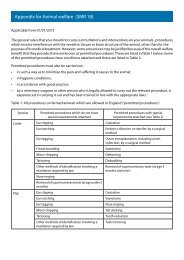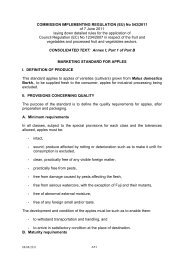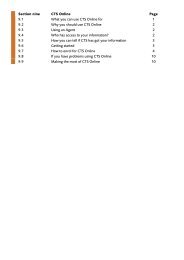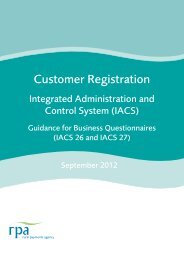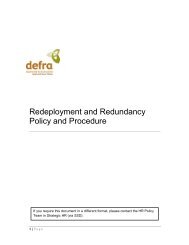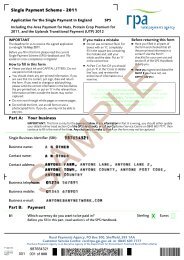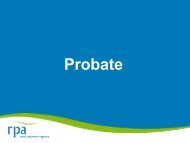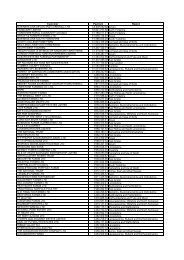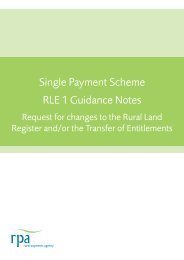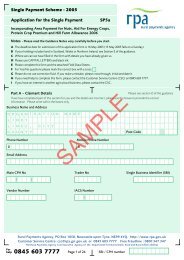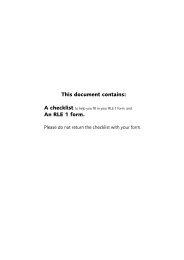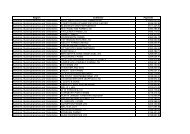Hill lFarm Allowance Explanatory Booklet.pdf - The Rural Payments ...
Hill lFarm Allowance Explanatory Booklet.pdf - The Rural Payments ...
Hill lFarm Allowance Explanatory Booklet.pdf - The Rural Payments ...
You also want an ePaper? Increase the reach of your titles
YUMPU automatically turns print PDFs into web optimized ePapers that Google loves.
<strong>Hill</strong> Farm <strong>Allowance</strong> <strong>Explanatory</strong> <strong>Booklet</strong>Calculating Stocking Density – a worked example<strong>The</strong> box below provides an example of claimed details and how these would be used to calculatestocking density.Non-LFA forageNon-LFA CommonsSeverely Disadvantaged LandDisadvantaged LandMoorlandLFA CommonsMilk Quota150 ha0 ha75 ha50 ha25 ha0 haSuckler Cows 170Ewes 571,029.670 tonnes1. Convert the Milk Quota to Livestock Units via the following formula for average yield:5.9 tonnes = 1 LU,Milk Quota Held/Average Yield = Livestock Units,=> 1,029.670 / 5.9 = 174.520 LUs<strong>The</strong> milk quota therefore works out as 174.52 LUs.2. To work out how many livestock units will be maintained on your Non-LFA forage, you will need tomultiply the total amount of Non-LFA forage by a stocking rate of 1.8:Non-LFA Forage Area x Non-LFA Stocking Rate = LU maintained on Non-LFA forage,=> 150 x 1.8 = 270 LU3. Deducting your Milk Quota from this total will leave the remaining amount of Non-LFA LivestockUnits:Remaining Non-LFA LUs – Milk Quota LUs,=> 270 – 174.520 = 95.48 LUs16



